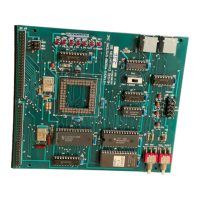Group Select Channel Select Selected Channels
CH2 CH1 CH0 Single Mode Scan Mode
00 0 AN
0 AN0
01 AN1 AN0 and AN1
10 AN2 AN0 to AN2
11 AN3 AN0 to AN3
10 0 AN4 AN4
01 AN5 AN4 and AN5
10 AN6 AN4 to AN6
11 AN7 AN4 to AN7
15.3 CPU Interface
The A/D data registers (ADDRA to ADDRD) are 16-bit registers. The upper byte of each register
can be read directly, but the lower byte is accessed through an 8-bit temporary register (TEMP).
When the CPU or DTC reads the upper byte of an A/D data register, at the same time as the upper
byte is placed on the internal data bus, the lower byte is transferred to TEMP. When the lower
byte is accessed, the value in TEMP is placed on the internal data bus.
A program that requires all 10 bits of an A/D result should perform word access, or should read
first the upper byte, then the lower byte of the A/D data register. Either way, it is assured of
obtaining consistent data. Consistent data are not assured if the program reads the lower byte first.
A program that requires only 8-bit A/D accuracy should perform byte access to the upper byte of
the A/D data register. The value in TEMP can be left unread.
Figure 15-2 shows the data flow when the CPU (or DTC) reads an A/D data register.
279
Downloaded from Elcodis.com electronic components distributor

